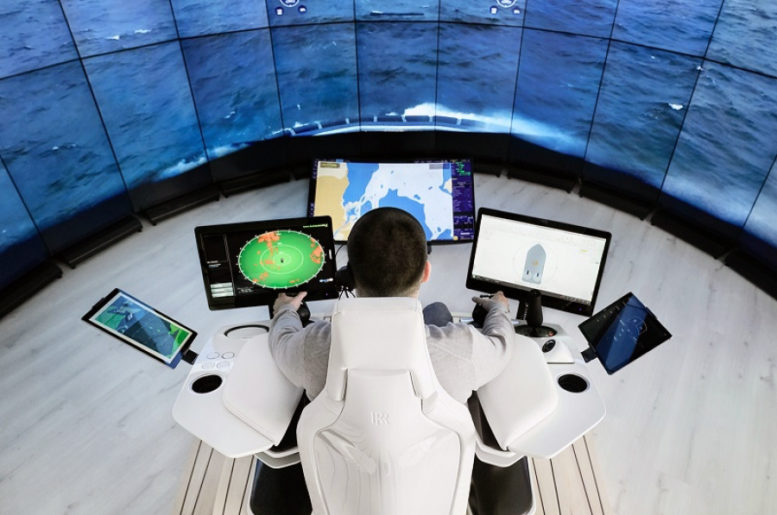Rolls-Royce and towage operator Svitzer have successfully demonstrated what they claim to be the world’s first remotely operated commercial vessel in Copenhagen Harbour, Denmark.
One of Svitzer´s tugs, the 28m Svitzer Hermod, safely conducted a number of remotely controlled maneuvers, operated from the quay side in Copenhagen Harbour by the vessel’s captain, stationed at the ship’s remote base at Svitzer headquarters. The captain used the remote-control system to berth the vessel alongside the quay, before continuing on to complete undocking maneuvers, including a 360-degree turn, and piloted the vessel to the Svitzer headquarters before docking again.
The companies say they have also signed an agreement to continue their cooperation to test further remote and autonomous operations for vessels. The primary systems involved will be autonomous navigation, situational awareness, remote control centre and communication.
“Disruption through innovation is happening in almost every industry and sector and technology will also be transforming the maritime industry. As the largest global towage company, Svitzer is actively engaging in projects that allow us to explore innovative ways to improve the safety and efficiency of towage operations to benefit our customers and our crews,” said Kristian Brauner, Chief Technology Officer, Svitzer.
“With its direct impact on our customer performance, operational cost and environmental footprint, vessel efficiency remains a main driver now and going forward. We are proud to be partnering with Rolls-Royce in this high-level research and development of systems for remote operation.” Brauner added.
The Svitzer Hermod, a Robert Allan ship design, was built in Turkey at the Sanmar Yard in 2016. It is equipped with a Rolls-Royce dynamic positioning system, which is the key link to the remote-controlled system. The vessel also features a range of sensors, which combine different data inputs using specialized software to give the captain an enhanced awareness of the vessel and its surroundings. The data is transmitted to a Remote Operating Centre (ROC) from where the captain controls the vessel.
Instead of copying existing wheelhouse designs, the ROC was constructed based on feedback from experienced captains, following their suggestions on where to place different system components for optimum accessibility and performance.
“It was an honor to be present at what I believe was a world’s first and a genuinely historic moment for the maritime industry,” said Mikael Makinen, President, Rolls-Royce – marine. “We’ve been saying for a couple of years that a remotely operated commercial vessel would be in operation by the end of the decade. Thanks to a unique combination of Svitzer’s operational knowledge and our technological expertise, we have made that vision a reality much sooner than we anticipated,” Makinen added.
Throughout the demonstration the vessel also had a fully qualified captain and crew on board to ensure safe operation in the event of a system failure.
